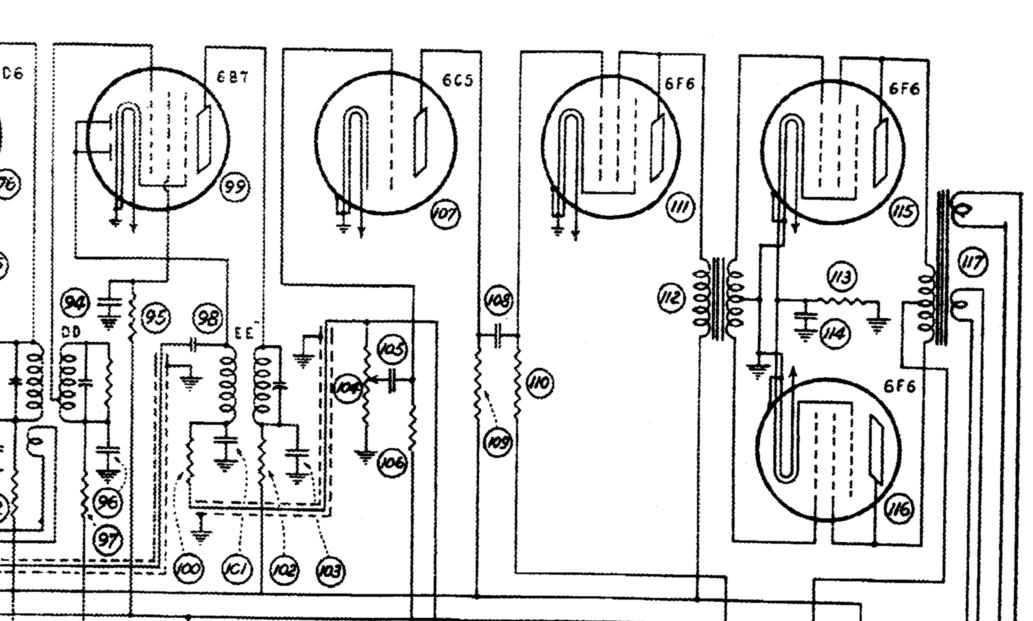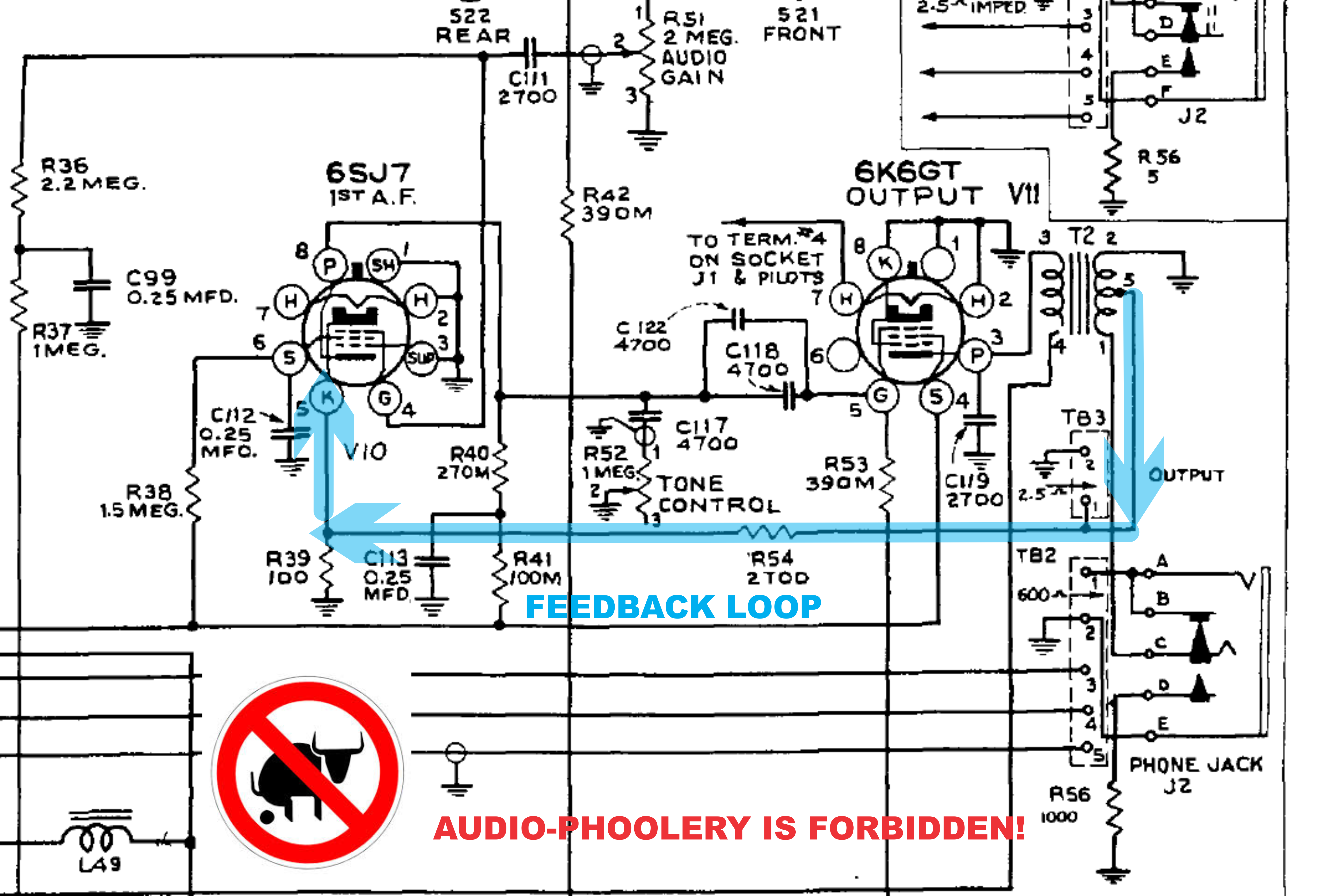Communications Receiver Audio
A number of years ago, I came into the position of a large, 1930'ish
speaker enclosure, bearing the Kolster name, but containing a late
1940's Altec 604 15-inch "Duplex" speaker. These were designed to be
studio monitors, and cost a good deal of money. This sat in my living
room for awhile.
Then I decided I really should use the thing. The top was just the
right size for a communications receiver, so I put a restored SX-28A on
top of it. These are reputed to have good audio from push-pull 6V6's
and complicated tone controls. The sound was good, but not great.
Next I tried the Hammarlund SP-110. It sounded a lot better. This
radio was designed as power pentodes were gaining favor for audio
output, mostly because they are easy to drive to high output with just a
couple of low level tubes, i.e. they are economical. It appears the
Hammarlund guys listened to the pentodes, and decided to spend money
instead. The Super-Pro was perhaps the best general coverage receiver
in existence at the time, and an important part of the market was for
broadcast monitors, where a modicum of audio power was needed. They
opted for push-pull triode connected pentodes, 6F6's in the second
generation SP-100, these were driven by a third triode-connected 6F6
via a surely-expensive driver transformer. Negative feedback was poorly
understood at this point. Triodes, with out feedback, were the answer
for clean audio. (There is some basis to all that audio-tomfoolery.)

I related my results to a fellow collector, and good friend. His
suggestion was try my AR-88 in the same environment. My response:
"Aw Pete, it only has a single ended 6K6, how good can it be?"
He said "Just try it." The silly radio sounded noticeably better
than the Super-Pro. How could this be, when the highly regardes
SX-28 sounde so much worset? The answere. feedback. By
1941, negtive feedback had become better understood, and the crew at
RCA , Camden were the 700-pound gorilla of receiver design.
Here's what they did:

Notice that the feedback come from the output side of T2, and extends back to the cathode of the 1st Audio amplifier.
Later, I applied this technique to improve the audio in the Hammarlund SP-600. SP-600 Audio Mod. 